Why you can trust Tom's Hardware
Our standard benchmarks and power tests are performed using the CPU’s stock frequencies (including any default boost/turbo), with all power-saving features enabled. We set optimized defaults in the BIOS and the memory by enabling the XMP profile. For this baseline testing, the Windows power scheme is set to Balanced (default), so the PC idles appropriately.
To get the most out of the Intel Alder Lake chips, you need to be on Windows 11 with its updated scheduler. In most cases, Windows 10 performs well. However, some tests (Cinebench R20, Corona and POVRay) take a significant hit. In short, if you’re going with Alder Lake, you must upgrade to Windows 11 for the best results across the board. That may change with patching and updates in the future, though.
Synthetic Benchmarks
Synthetics provide a great way to determine how a board runs, as identical settings should produce similar performance results. Turbo boost wattage and advanced memory timings are places where motherboard makers can still optimize for either stability or performance, though, and those settings can impact some testing.
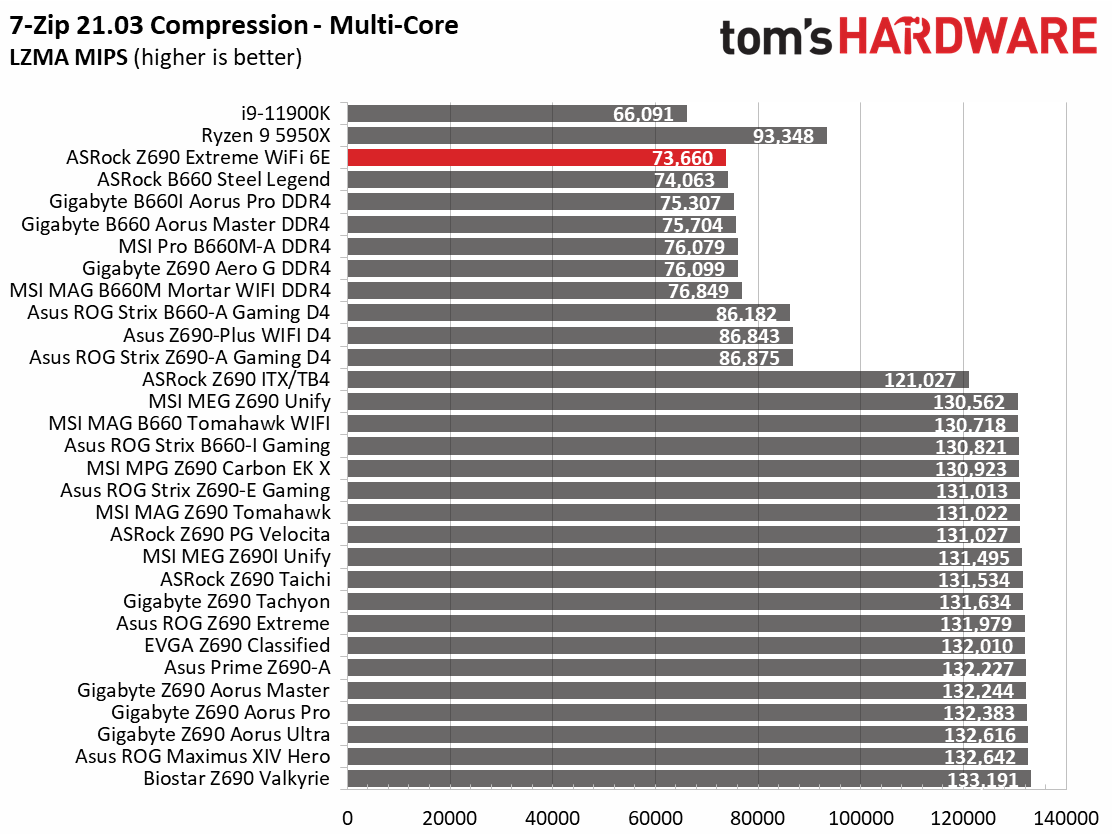


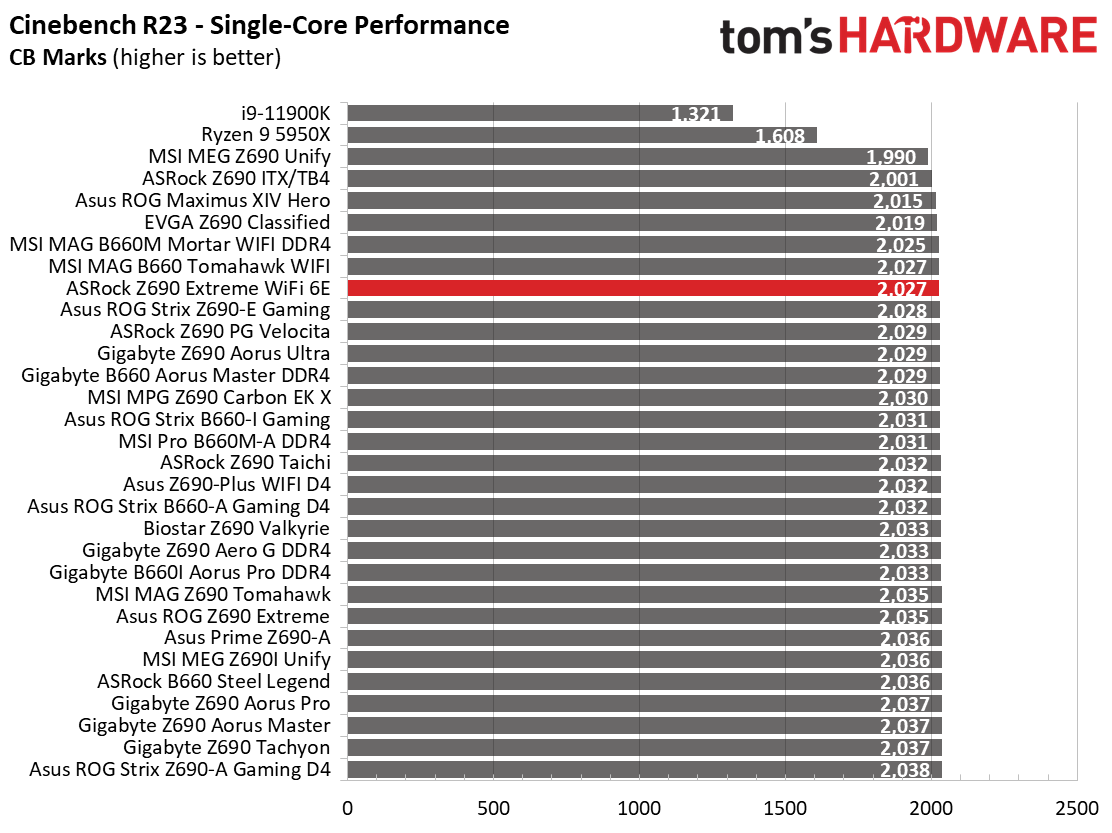

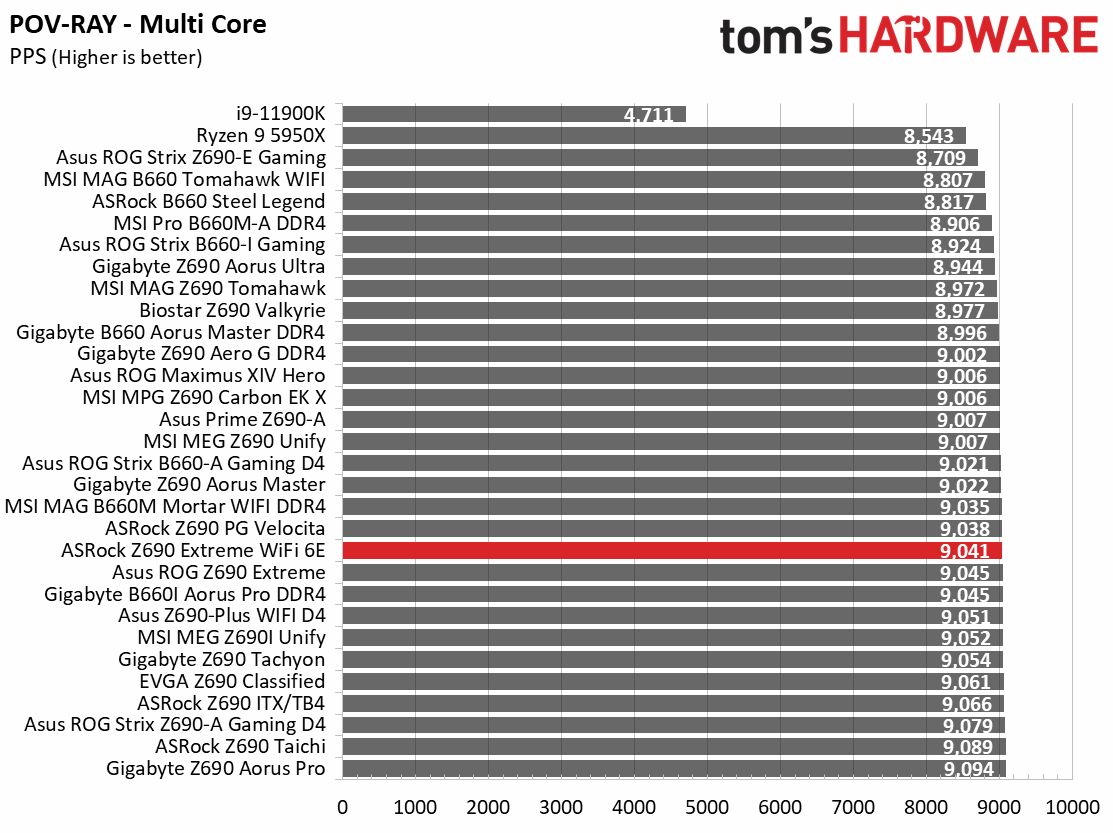
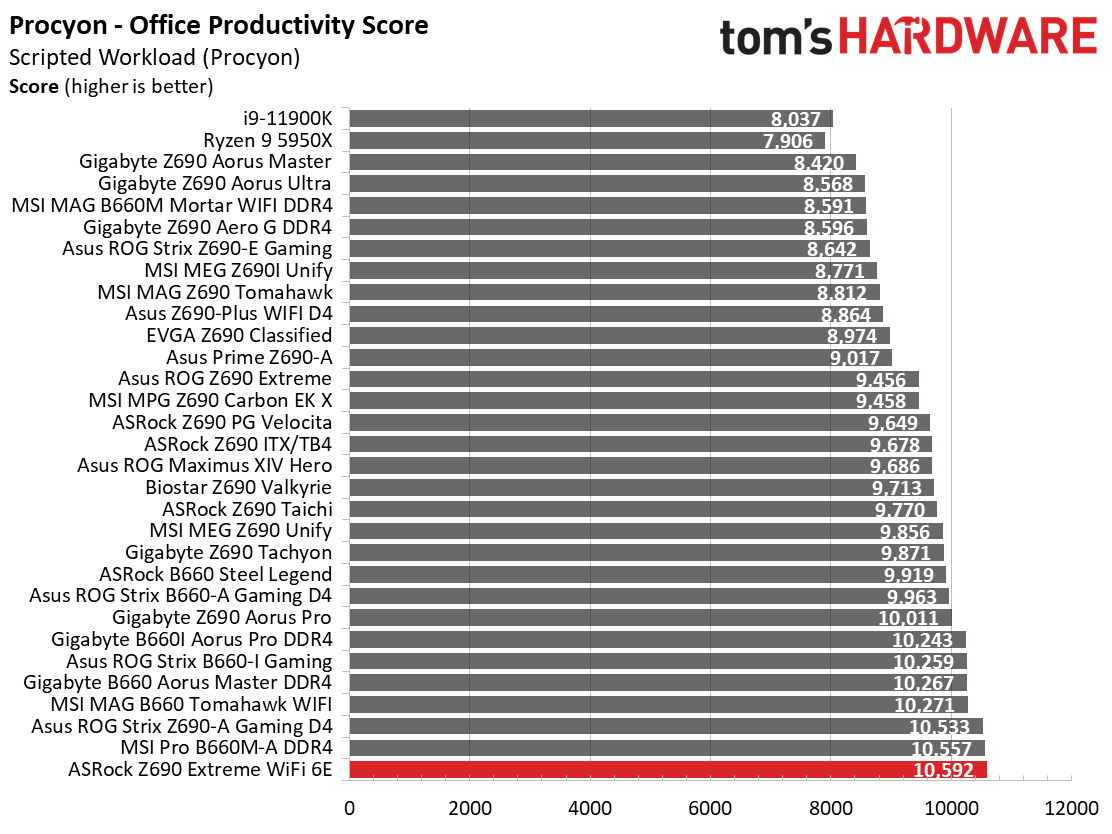

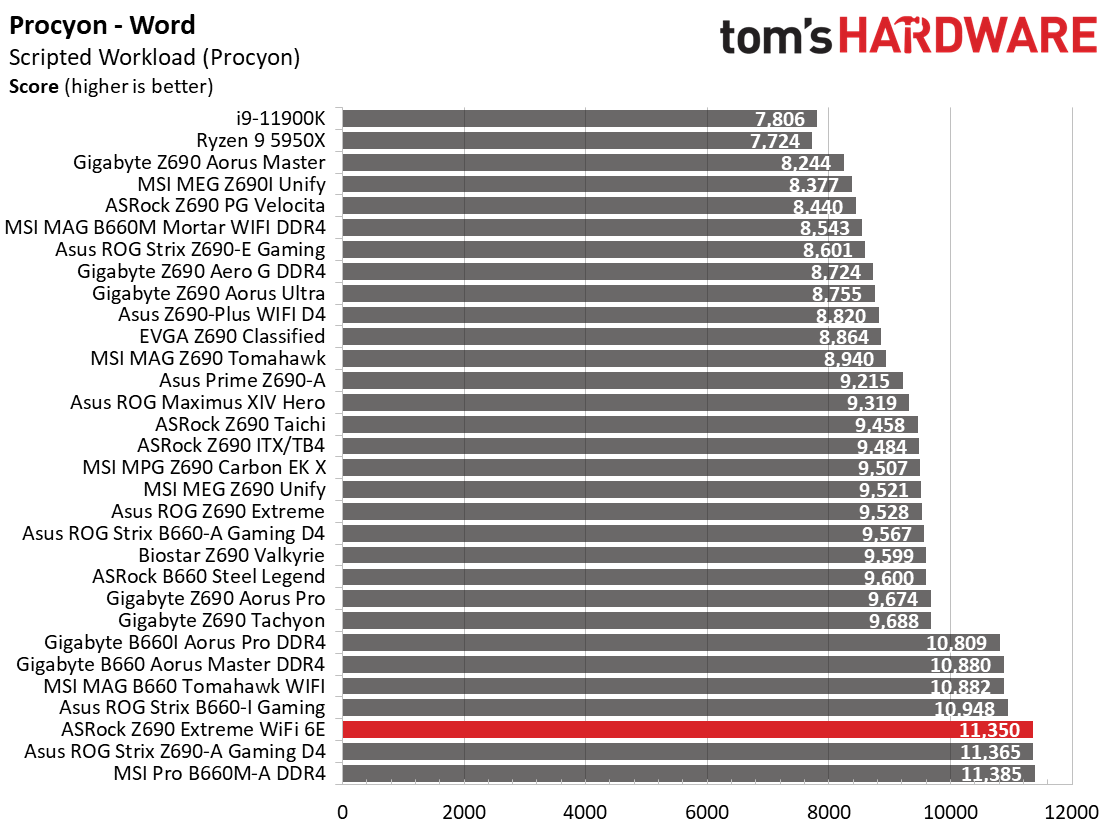

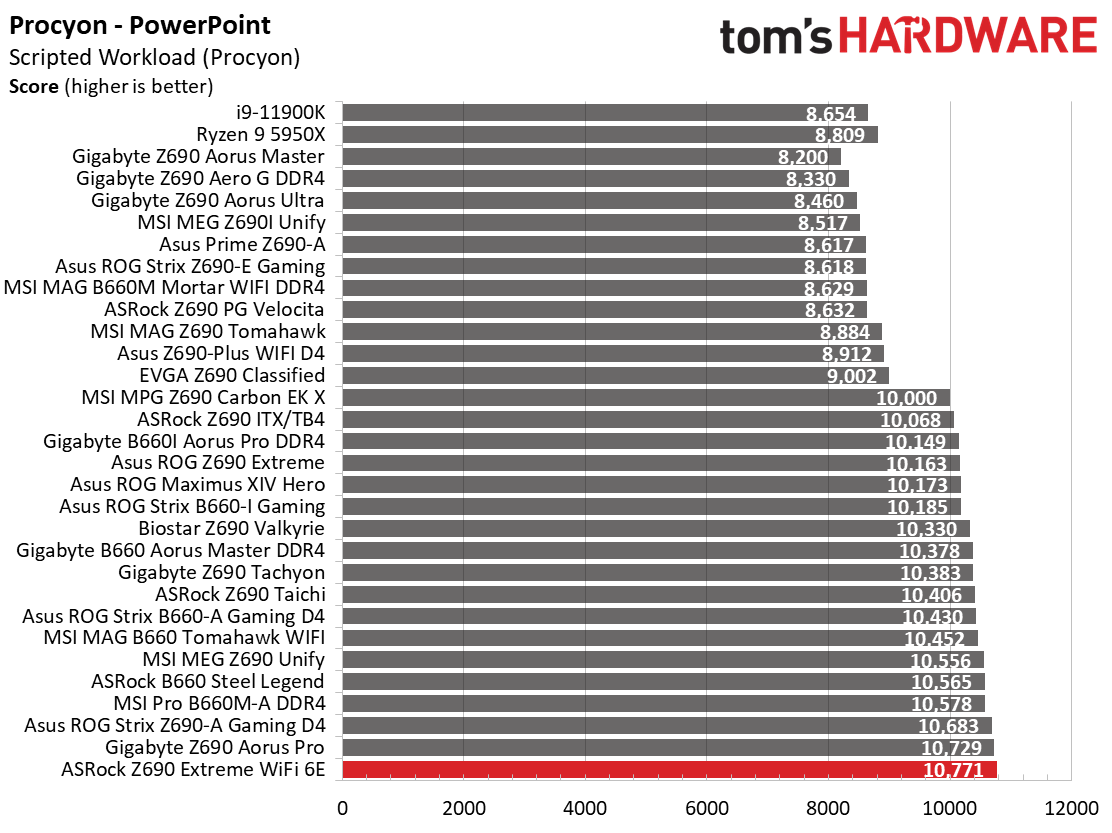




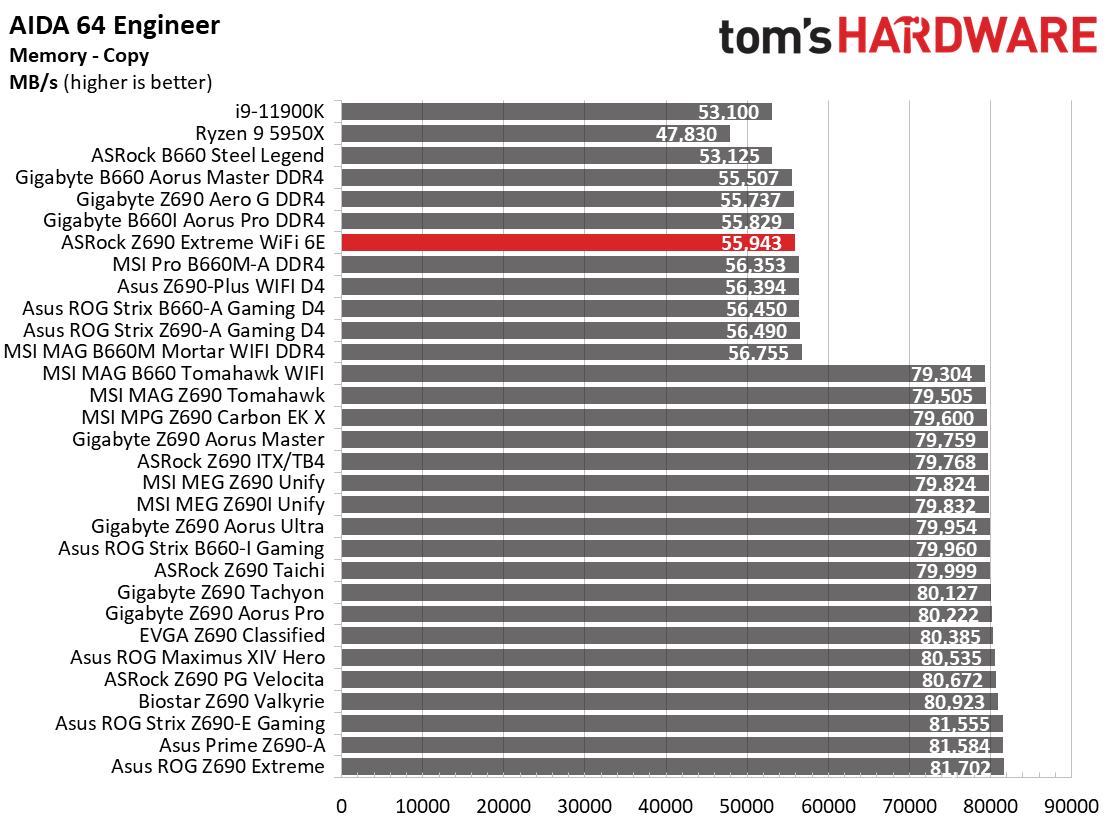

Results from our synthetic benchmarks were all over the place, depending on the test and load. 7Zip results were the slowest we’ve seen, while Cinebench and POV-Ray were also on the slow side of average. Blender results were solid, along with the Procyon Photo and Video editing results mixing in with the other boards. On the flip side, the Procyon Office tests were some of the fastest we’ve recorded.
Timed Applications
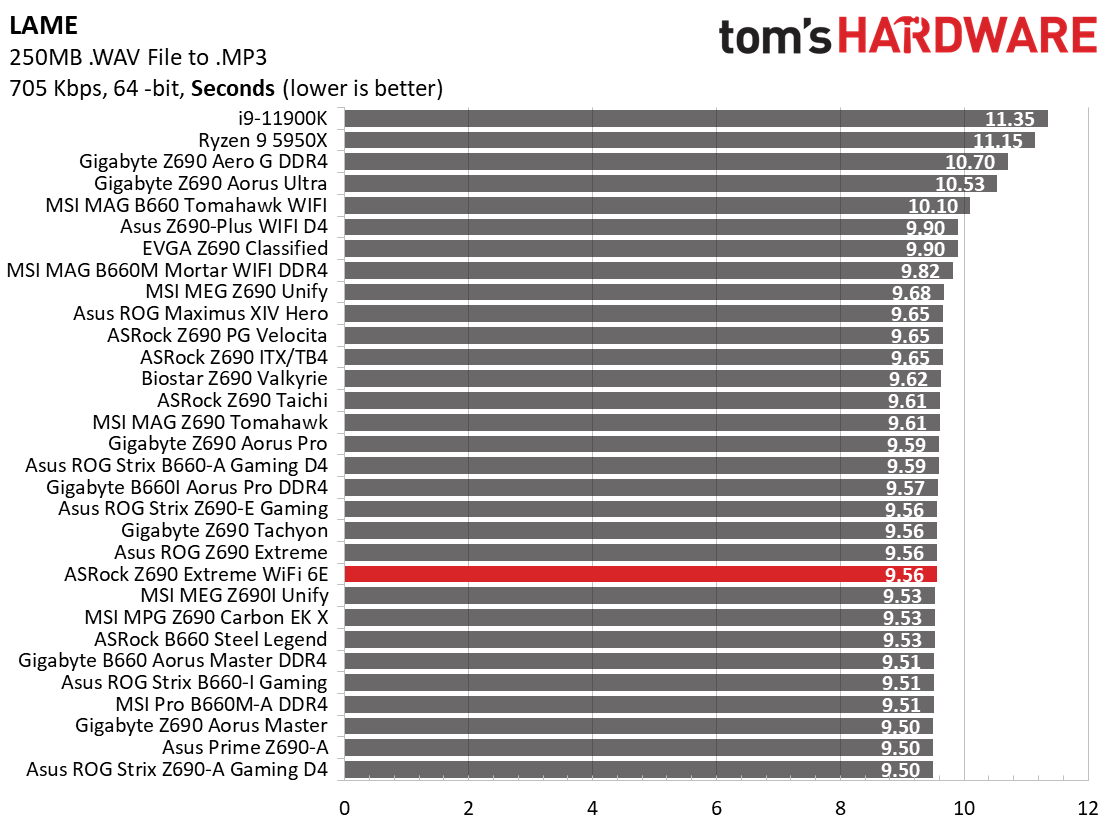
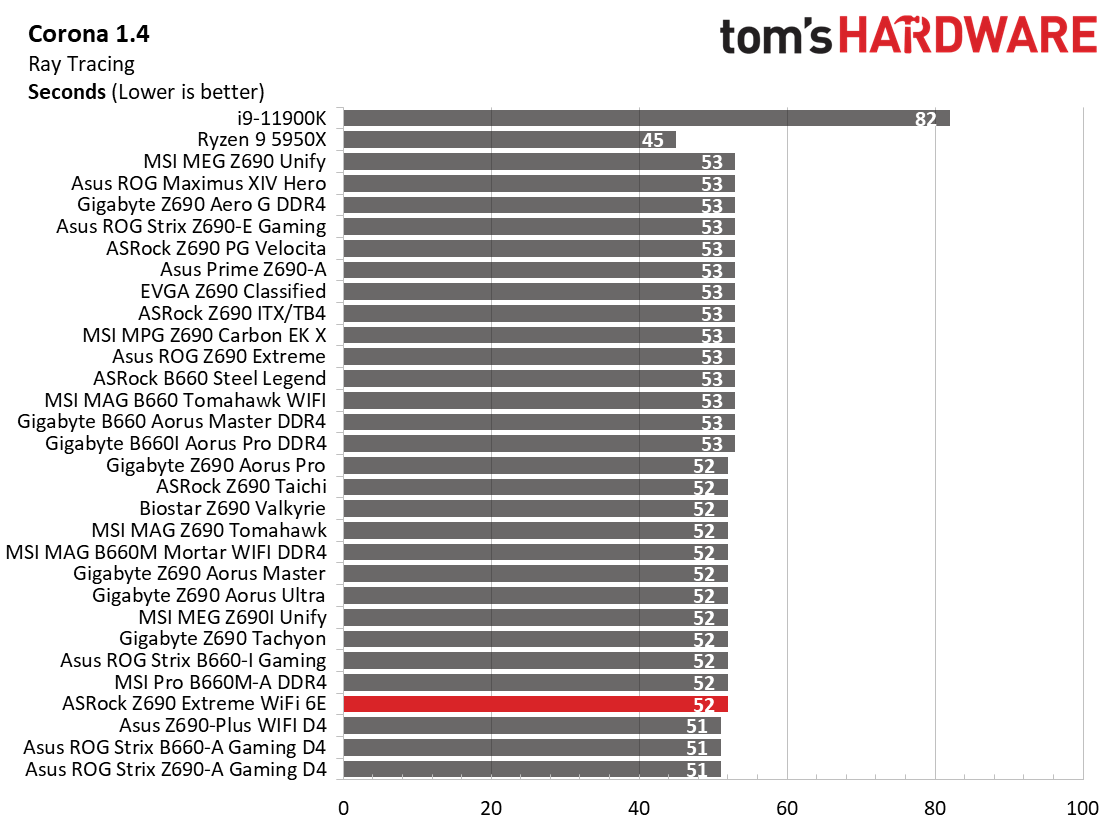
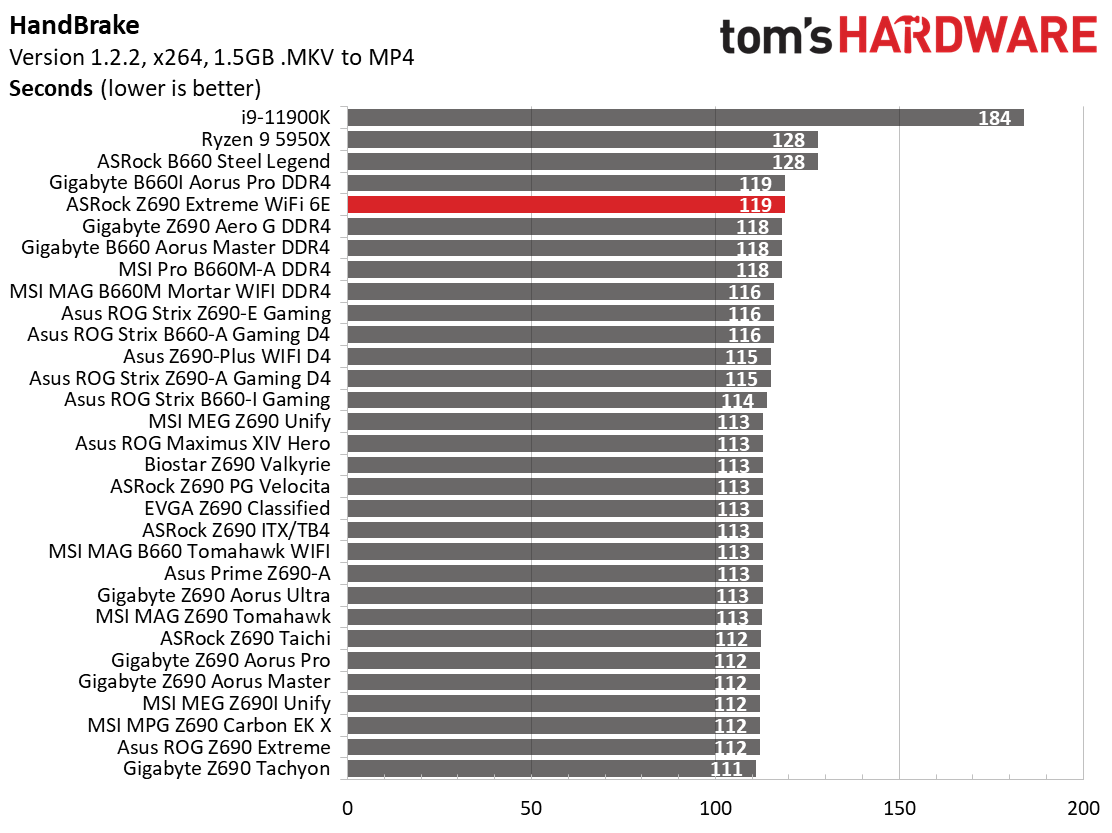
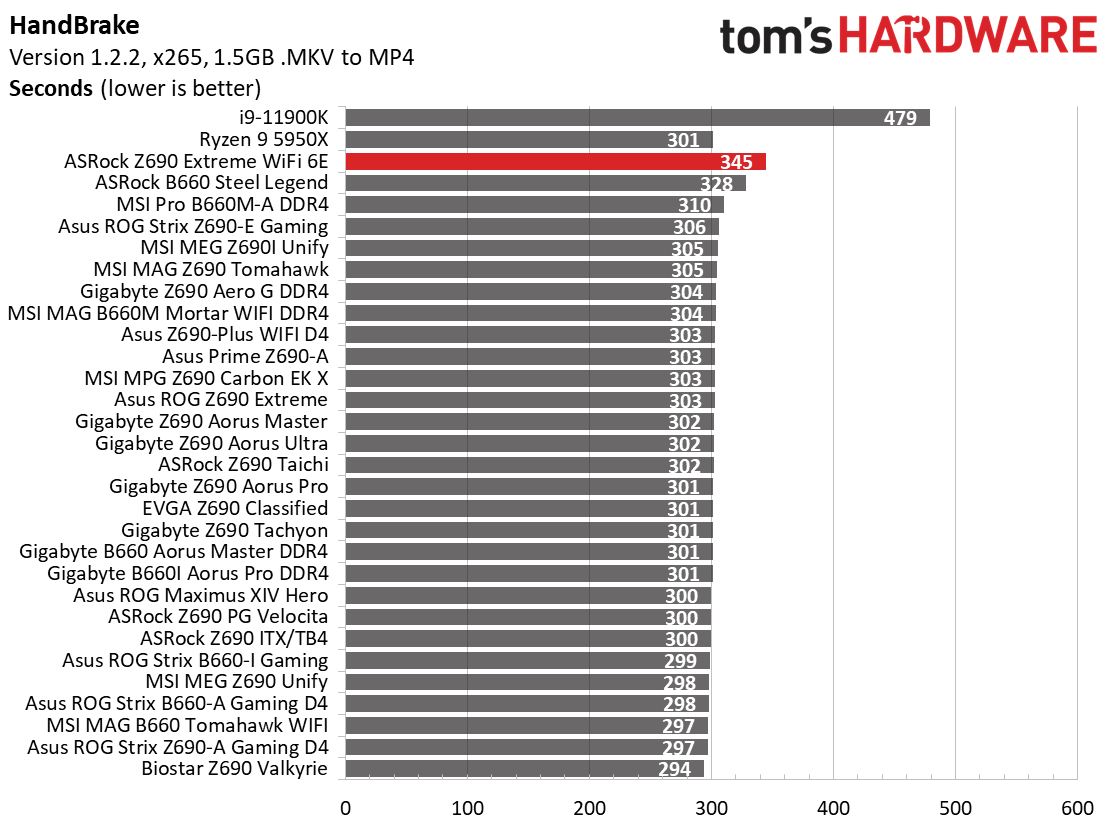
In our timed applications, the Z690 Extreme WiFi also did well, with average test results in LAME and Corona. Handbrake, however, delivered the slowest result of Z690 boards we’ve tested. Again, most heavily multi-threaded tests run slower than most other boards.
3D Games and 3DMark

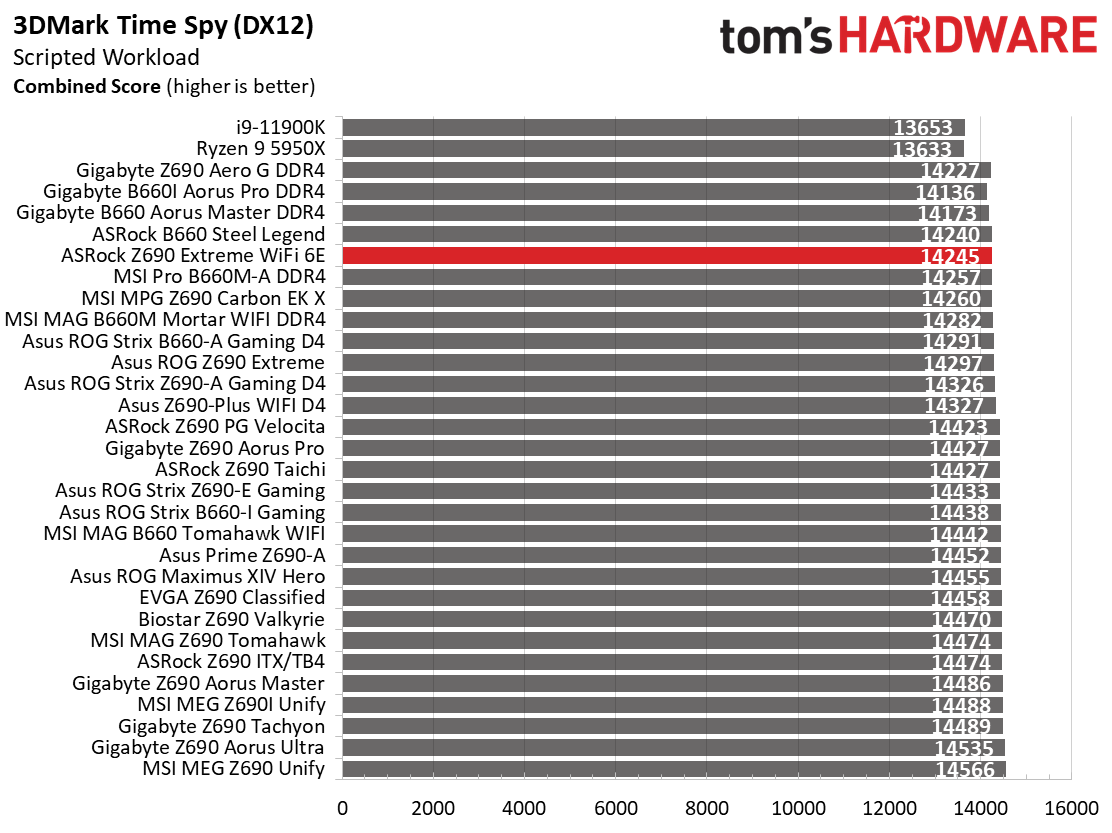
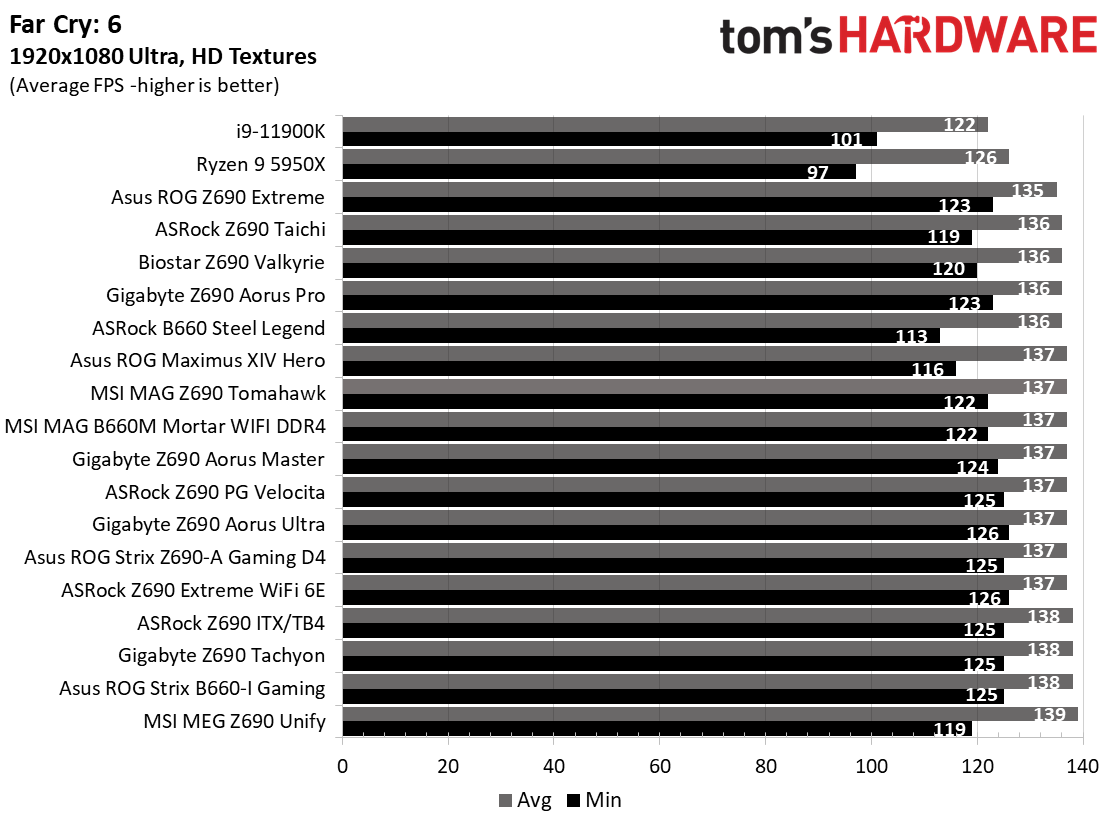
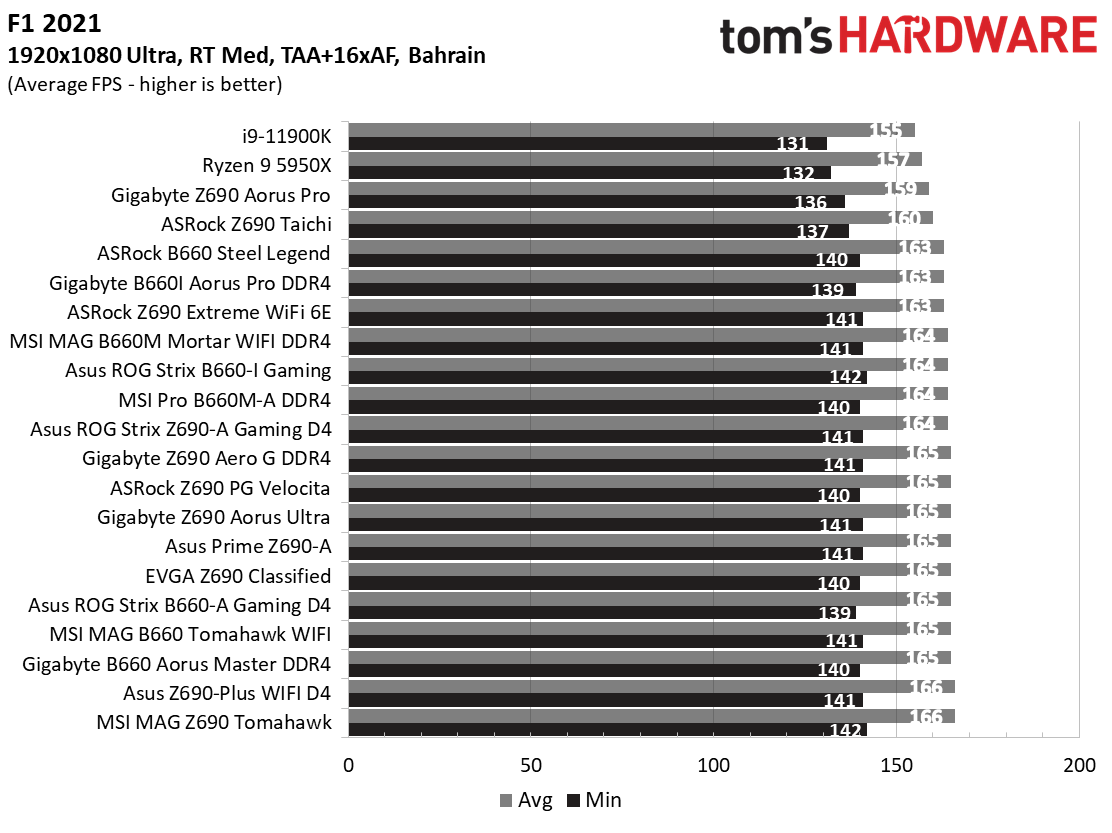
Starting with the launch of the Z690 chipset, we’ve updated our game tests, switching to Far Cry 6 and shifting from F1 2020 to F1 2021. We run the games at 1920x1080 resolution using the Ultra preset (details listed above). As the resolution goes up, the CPU tends to have less impact. The goal with these settings is to determine if there are differences in performance at the most commonly used resolution with settings most people use or strive for. We expect the difference between boards in these tests to be minor, with most falling within the margin of error differences. We’ve also added a minimum FPS value, as that can affect your gameplay and immersion experience.
In F1 2021, the Z690 Extreme reached 163 frames per second (fps) with minimums of 141 fps, a mediocre result. In Far Cry 6, results were also average at 137 fps, with the minimum at 126 fps, also average. In the synthetic benchmarks, the board scored 14,245 in Time Spy (about average), while the 17,050 score in Fire Strike Extreme is one of the faster results. All that said, this board is just as capable of a gaming machine as the others. You’re not going to notice performance differences outside of benchmark results.
Get Tom's Hardware's best news and in-depth reviews, straight to your inbox.
Power Consumption / VRM Temperatures
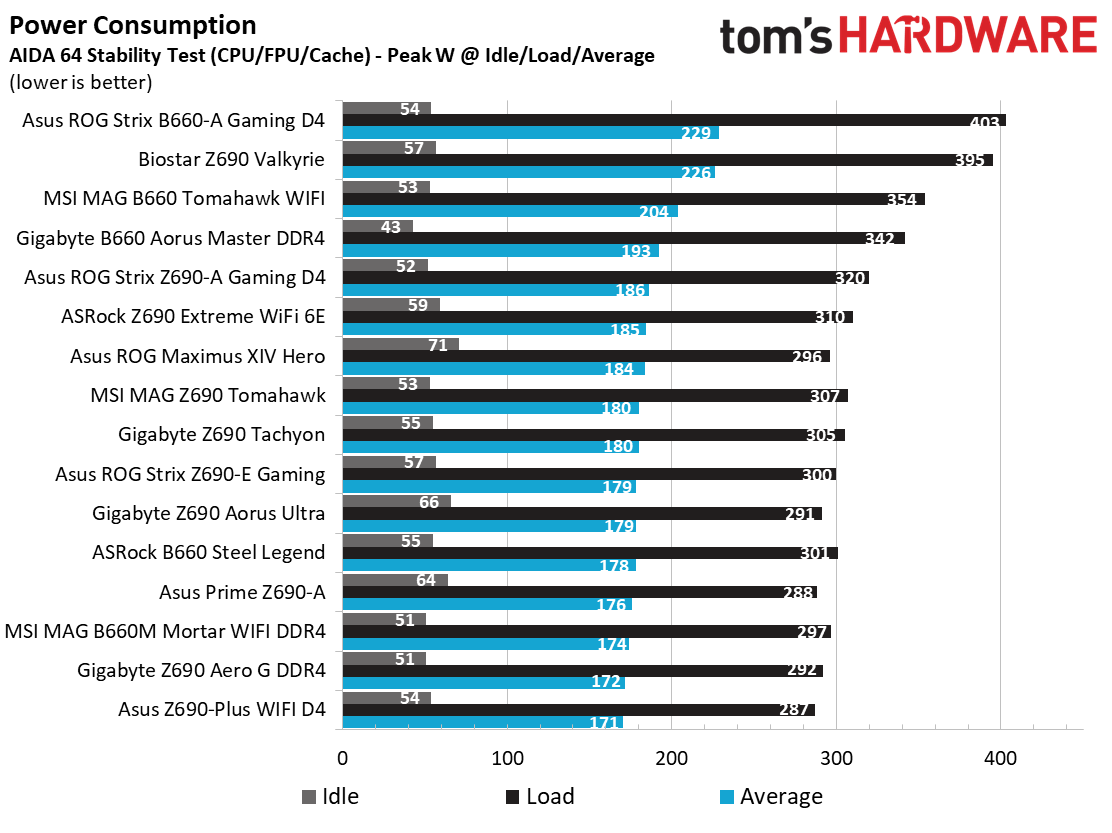
We used AIDA64’s System Stability Test with Stress CPU, FPU and Cache enabled for power testing, using the peak power consumption value. The wattage reading is from the wall via a Kill-A-Watt meter to capture the entire PC minus the monitor. The only variable that changes is the motherboard; all other parts are the same.
At idle, the Z690 Extreme consumed 59W, which is on the lower side of average among Alder Lake boards we’ve tested (the average is 61W). Load wattage peaked at 310W, which is also better than the average (325W) for all boards. There’s nothing out of line when it comes to power consumption.
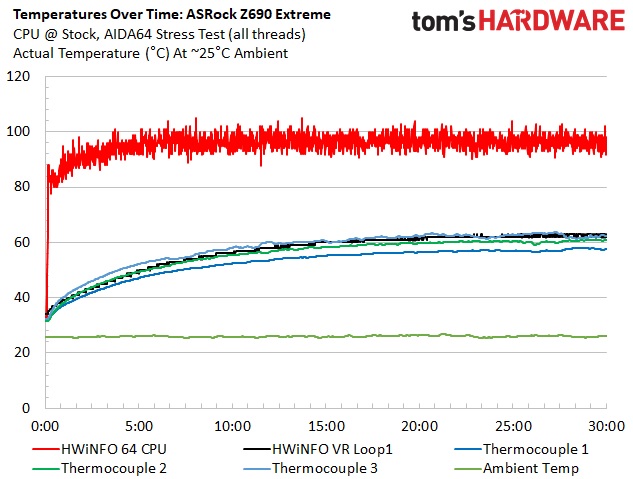
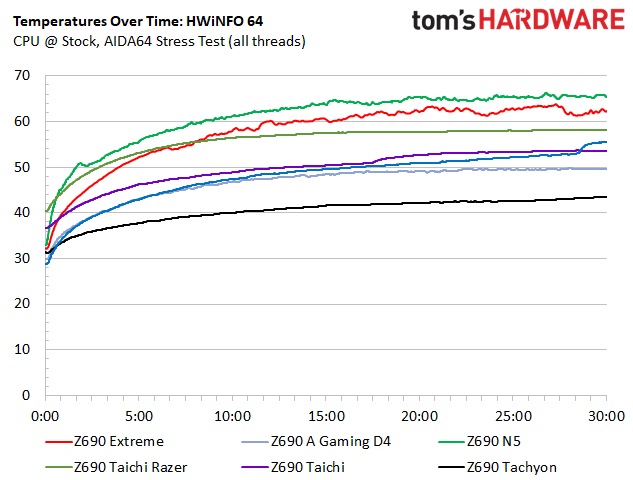
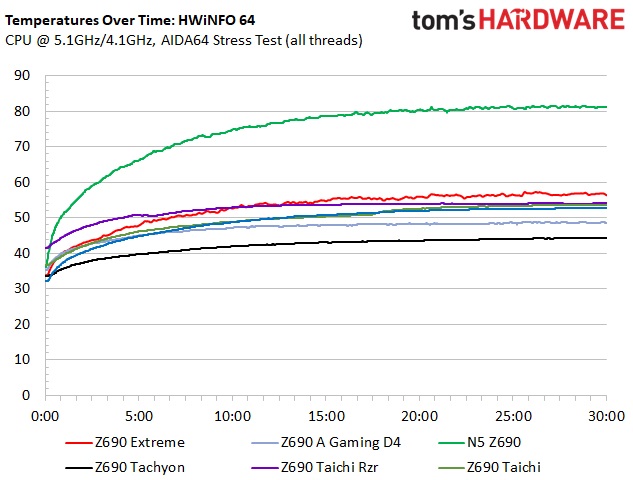
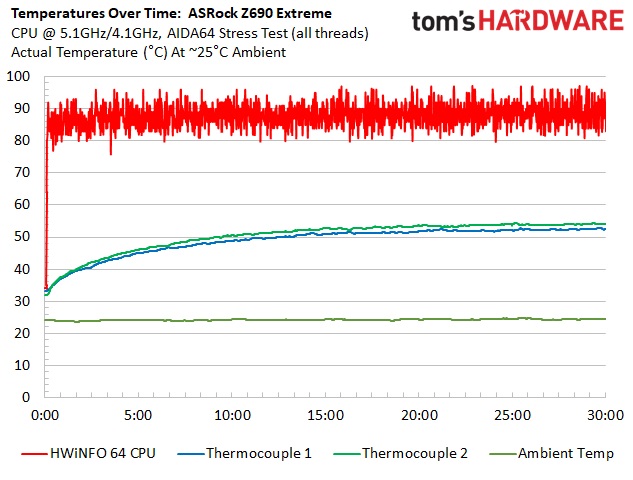
VRM temperatures ran warm during our testing, peaking around 64 degrees Celsius. When we overclocked, even though we appeared to need more voltage than other boards, the VRM temperatures ran a few degrees cooler, peaking around 57 degrees Celsius. Either way, the temperatures are well within specification for the 60A SPS MOSFETs.
Overclocking
Overclocking with Alder Lake is slightly different from what we’re used to due to the hybrid core configuration. Now, you can overclock the P and E cores separately, though they both use the same voltage domain. You can push one and not the other, or both, so there’s some flexibility. We set an overclock to 5.1 GHz across all P-cores and 4.1Ghz on all E-cores. This yields a 200 MHz bump on the P-cores and a 400 MHz increase on the E-cores. We’re topped out on the P-cores, primarily due to temperatures, but the more efficient E-cores still have some headroom.

Overclocking our Intel Core i9-12900K with the Z690 Extreme took a bit more tweaking than most boards. When we dialed in our 1.25V and adjusted Load Line Calibration to LLC1 (to eliminate the vdroop), the system froze. After some tweaking, we determined this board needs a little more voltage (according to software) than the others for the same 12900K to be stable. By default, ASRock also sets this board to a 110 degrees Celsius TJunction/thermal throttle point. ASRock said this wouldn’t harm the processor, but I’m not sure why they chose to go above the Intel specification out of the box. In the end, our overclock was stable but did take more work to get there.
On the memory side, we dropped our GSkill DDR4-4000 sticks in, enabled XMP, and went off without issue. Of course, the middling DDR4-3600 kit worked fine for our testing too. We suspect some headroom is still left as ASRock lists support up to DDR4-5333+(OC), well overvalue-focused speeds.
Bottom Line
ASRock’s Z690 Extreme WiFi is a good motherboard to build your Alder Lake-based system around, especially if you’re looking to save some money. While out-of-the-box performance with some heavily multi-threaded applications was slower than average, in other tests, such as the Procyon Office and games, it performed quite well. Hardware-wise, the board is well-equipped for its price, including three M.2 sockets, a whopping eight SATA ports, dual Ethernet ports (1GbE/2.5GbE), and integrated Wi-Fi 6E. The 60A MOSFETs aren’t the most robust, but they handled our i9-12900K with minimal fuss. On top of all that, the board looks good too, with its mostly black design, dark blue accents, bright RGB LEDs, and aesthetically pleasing notches cut out. The Extreme WiFi 6E is a solid base to build with, especially for the price ($196.99 at Newegg and $221 at Amazon).
The $200 price area is full of other options, including the Asus Prime Z690-P D4 ($206.99), MSI Pro Z690-A WIFI DDR4 ($214.99), and the Gigabyte Z690 Gaming X DDR4 ($224.99). Although these boards are relatively well-equipped, only the Extreme comes with eight SATA ports, integrated Wi-Fi 6E, and eight SATA ports. The MSI and Gigabyte have more USB ports on the rear IO, in case the five Type-A on the Extreme’s rear IO are insufficient. Outside of that, the significant differences lay in looks and price–both areas where the ASRock arguably wins. If you’re into RGB lighting, which the Asus and MSI do not have, the Extreme WiFi 6E is the way to go. If you don’t need Wi-Fi, the Z690 Extreme model is worth considering. But it oddly costs about $10-$20 more at this time, despite being the same board as the WiFi model, just without the Wi-Fi. Unless you need more than five USB ports on the rear IO, the Z690 Extreme is the best Z690 board we’ve tested around the $200 mark.
MORE: Best Motherboards
MORE: How To Choose A Motherboard
MORE: All Motherboard Content

Joe Shields is a staff writer at Tom’s Hardware. He reviews motherboards and PC components.
-
enorl76 Board looks like a great value.Reply
Although I question... why is anybody in the world in 2022 still putting PS/2 ports on mobo's???
I got rid of last PS/2 keyboard about a decade ago. -
closs.sebastien yes, they could remove the ps2... I don't even know any device that exist these days..Reply
how do you explain the slow performances? -
shady28 ReplyTom Sunday said:I have never been a great fan of ASRock, but the ‘Z690 Extreme’ appears to be a good deal on the surface. With the new 700 MB series arriving in a few months time, I wonder what the prices for the ASRock Extreme will be then at the local Computer Show with no sales tax, cash in hand and dropped across the folding table. $110? I am sure that the ‘Bangladesh Boys’ will have a slew of them and perhaps bundling those with outgoing and discounted DDR4 and a Core i5-12400F of which many are already seen at the show at give-away prices! Perfect for the man on the street seeking a quick-fix and with all the bells and whistles. Indeed the times are right for big discounts and even for me with already eyeing previously used 30-gen GPU’s having flooded by now the tables here!
As far as deals, you can get an EVGA Classified Z690 for $299 from EVGA now if you can fit a EATX. That's like $330 off a normally $629 board.
A little more than $110, but just put that in your sig and you'll get oohs and aahhs. -
ocer9999 Indeed, the Z690 Extreme is a great deal under 200$, all around motherboard with solid VRMs as well Wifi 6E, you can't really beat it. Always had good luck with their boards, if I was on the market for a new motherboard, this would definitely be one on my list.Reply